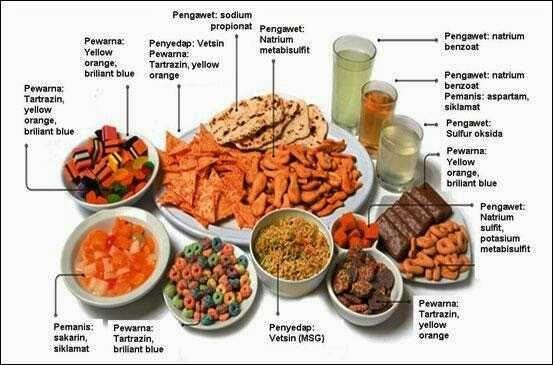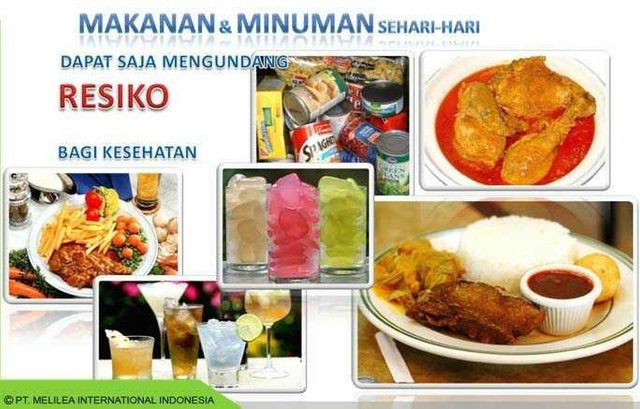food misuse


The proverb says life to eat. But those who say that eat to live. Man does need food to support his life. food is anything that comes from biological sources of agricultural, plantation, forestry, fishery, livestock, aquatic and water products, whether processed or unprocessed for food or beverage for human consumption, including food additives, raw materials for food, and other materials used in the process of preparing, processing, and or preparing food or drink.
Along with the development of technology demands and public attention to food is increasing. The eating philosophy has been shifting, where eating is not just for satiety, but more importantly is to achieve optimal health and fitness because health is the most precious treasure in life. People are increasingly aware of the quality of food consumed, and the food consumed daily should also be nutritious and healthy. The Government of Indonesia issued the Food Law of the Republic of Indonesia Number 7 of 1996 on food safety is defined as the conditions and efforts required to prevent food conditions from possible biological, chemical and other contamination that may disrupt, harm and endanger human health. Usually health disorders caused by chemical hazards will only appear for a long time. An example of misuse of non-food additives is the use of textile dyes for food. Chemical hazards can also come from chemical contaminants that enter the food. Chemical contaminants such as cleaning fluids, pesticides, paints, oils, chemical components of equipment or packaging that comes off and into the food. Heavy metals enter through contaminated water, newsprint used to pack food and motor vehicle fumes. The use of food additives that exceed the threshold of use, can lead to carcinogenic diseases (tumors, cancer). The latest FAO survey results, the first cause of death in the world is caused by tumor and cancer.
Until now in many circles, both food vendors, around offices and schools, markets are still found in many foods-beverages containing food additives, the most widely used sweeteners, preservatives, flavor enhancers (MSG) and artificial coloring. Survey results of the use of dyes and artificial essence in food-beverages such as jam, jelly, fruit juice, instant drinks, ice syrup, and candy. The food group is also suspected of using many artificial sweeteners sakarindan siklamat. Though these foods are very often consumed by children, especially the age of kindergarten and elementary school, such conditions are very disturbing.